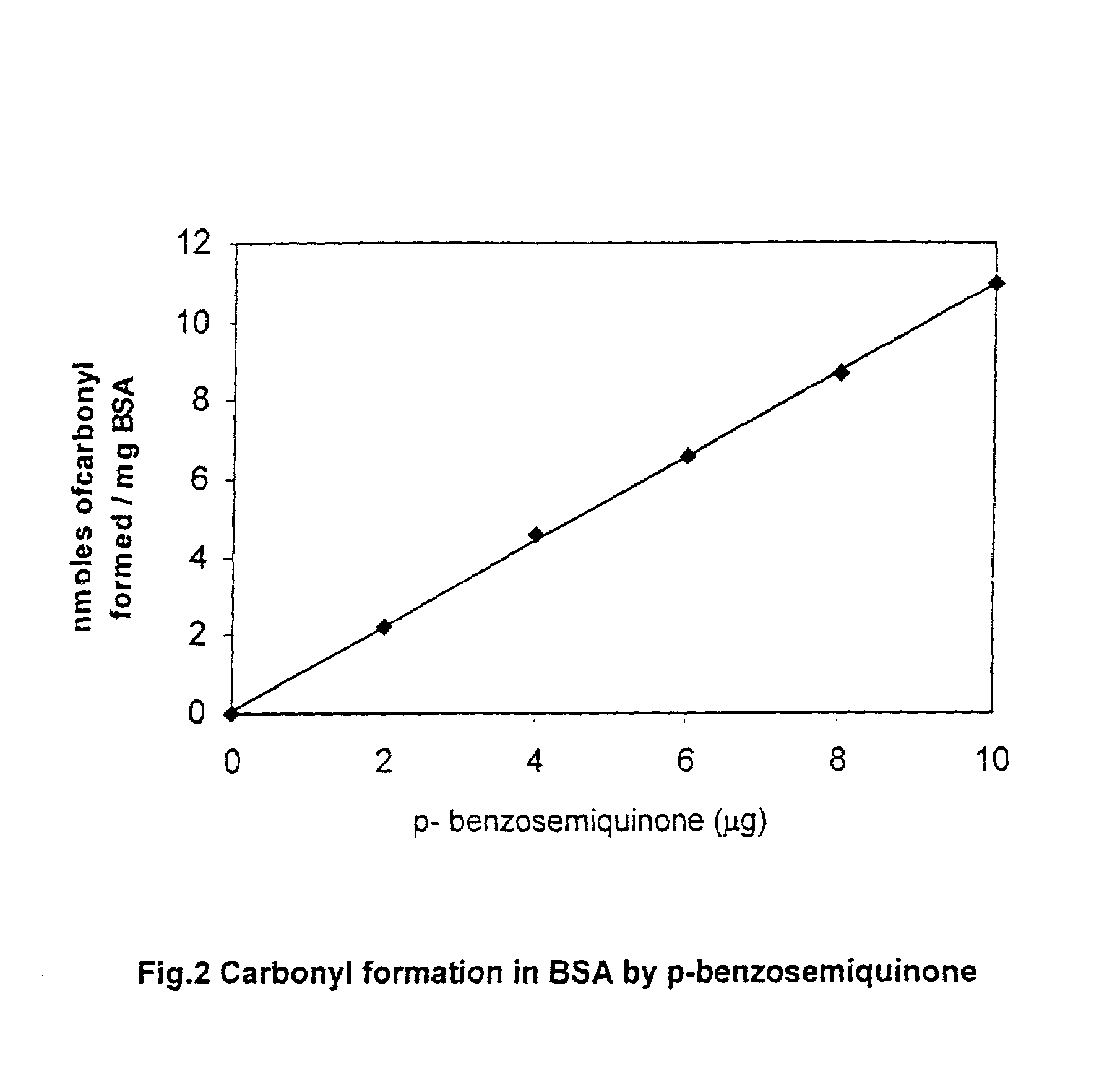Activated charcoal filter for effectively reducing p-benzosemiquinone from the mainstream cigarette smoke
a technology of active charcoal and p-benzosemiquinone, which is applied in the field of active charcoal filter for, can solve the problems of not being able to effectively reduce the exposure of smokers to toxins, not being able to selectively identify individual compounds, and poor concept of tar as a basis for regulating tobacco, so as to reduce the level of p-benzosemiquinone and effectively reduce the level of p-benzosemiquino
- Summary
- Abstract
- Description
- Claims
- Application Information
AI Technical Summary
Benefits of technology
Problems solved by technology
Method used
Image
Examples
Embodiment Construction
[0031]In accordance, the present invention provides a filter for tobacco smoke inhaling / generating / producing device, the said filter comprising three sections placed longitudinally one after another wherein, the first section comprising cellulose acetate fibre acting as a mouth piece, the second section comprising activated charcoal selected from group consisting of charcoal particles having grain size ranging between 25 mesh and 100 mesh for effectively reducing p-benzosemiquinone, a highly reactive major harmful oxidant from the mainstream of cigarette smoke and the third section comprising cellulose acetate fibre located closer to the tobacco portion of the cigarette also acting as a barrier between the activated charcoal and tobacco
[0032]In embodiment of the invention, wherein length of the first section is in the range of 10 to 14 mm, length of the second section 4.5 mm to 35 mm which is dependent on the grain size and / or amount of charcoal used and length of the third section ...
PUM
 Login to View More
Login to View More Abstract
Description
Claims
Application Information
 Login to View More
Login to View More - R&D
- Intellectual Property
- Life Sciences
- Materials
- Tech Scout
- Unparalleled Data Quality
- Higher Quality Content
- 60% Fewer Hallucinations
Browse by: Latest US Patents, China's latest patents, Technical Efficacy Thesaurus, Application Domain, Technology Topic, Popular Technical Reports.
© 2025 PatSnap. All rights reserved.Legal|Privacy policy|Modern Slavery Act Transparency Statement|Sitemap|About US| Contact US: help@patsnap.com



